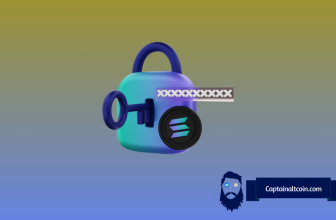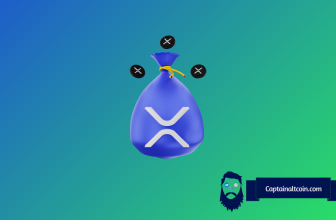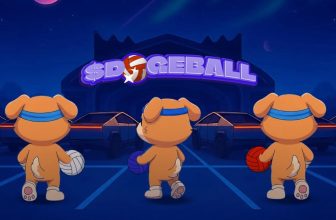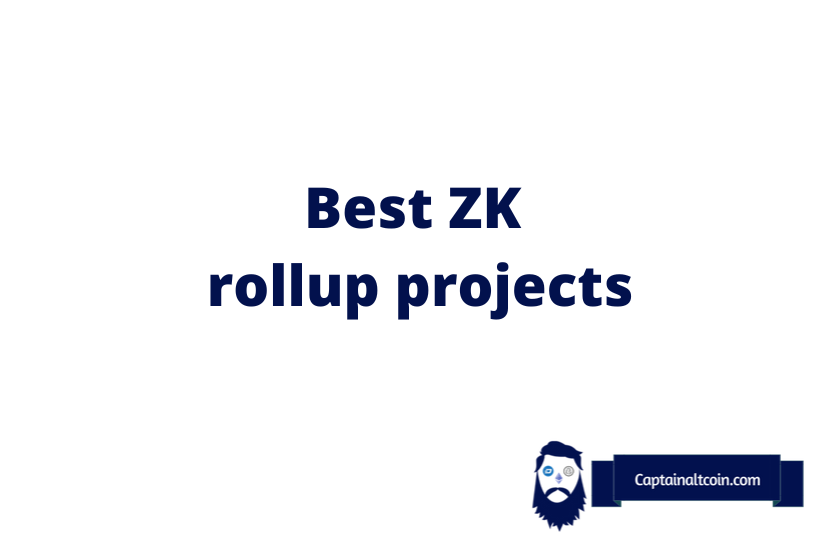
What you'll learn 👉
🕰️ ZK-Rollup Projects: A Complete Guide to the Future of Scaling Blockchain
ZK-Rollup Projects are the future of scaling blockchain and revolutionizing products across all sectors. Leading Zero-Knowledge Rollup (ZK-Rollup) blockchains such as Starknet, ZKsync, and Polygon increase scalability and security truly unparalleled, allowing developers to create high-performance and low fee products.
What’s more, these Layer two solutions seamlessly execute transactions off-chain before recombining them into one submission on the Ethereum main chain. This provides a cost effective way of fully leveraging the entire potential of Ethereum.
When it comes to getting started with ZK-Rollups, some of the top projects out there – ranging from wallets to decentralized exchanges -include dYdX, Sorare, Immutable, Deversifi and Celer who are actively working towards reducing costs and providing frictionless user experiences.
With ZK-Rollup Projects: A Complete Guide to the Future of Scaling Blockchain – you’ll learn all about this new blockchain technology and how it can help you develop the most powerful products for your business.
| 🚀 ZK Rollup Project | 📝 Summary |
|---|---|
| 🥉 Polygon Zero | An advanced solution for decentralized applications that need high performance. It reduces the computing cost of generating proofs through recursive proofs. |
| 🥇 StarkNet | The next-generation ZK-rollup platform that provides developers with a secure and affordable way to build their applications on Ethereum. |
| 🥉 Immutable X | The ultimate answer to Ethereum and NFT scalability. It offers instant transaction confirmation and near-zero gas fees for minting and trading NFTs. |
| 🔒 zkSync | A leading Ethereum Layer-2 blockchain solution that promises to enable users to securely and privately scale their Ethereum transactions. |
| 🔑 Scroll | Three-layer design (Settlement, Sequencing, Proving) ensures high throughput. SCR crashed 60% post-launch due to limited supply and Binance’s Launchpool allocation. |
| 🥇 Syscoin (SYS) | A secure and scalable ZK-Rollup solution for commerce, combining Layer 1 and Layer 2 elements with its PoW blockchain. |
🚀 The Most Popular ZK-Rollup Blockchains: Which Ones Should You Know?
If you’re looking for scalability solutions to Ethereum’s scalability challenges, then you need to keep an eye on the most popular ZK-rollup blockchains. These projects have exploded in popularity since 2020’s DeFi rush and offer unique solutions to the space.
All these projects are pushing the industry forward in terms of scalability and usability so it’s worth keeping your eyes open as more of these projects come up in 2023.
🥉 Polygon Zero: The High-Performance Solution for Decentralized Applications
Polygon Zero is an advanced solution for decentralised applications that need high performance. It is designed to reduce the computing cost of generating proofs, through recursive proofs. This technology has now been acquired by Polygon (formerly MATIC Networks, formerly Mir Protocol) and a $400M investment as part of their wider pledge to investing in scaling zero-knowledge technology.
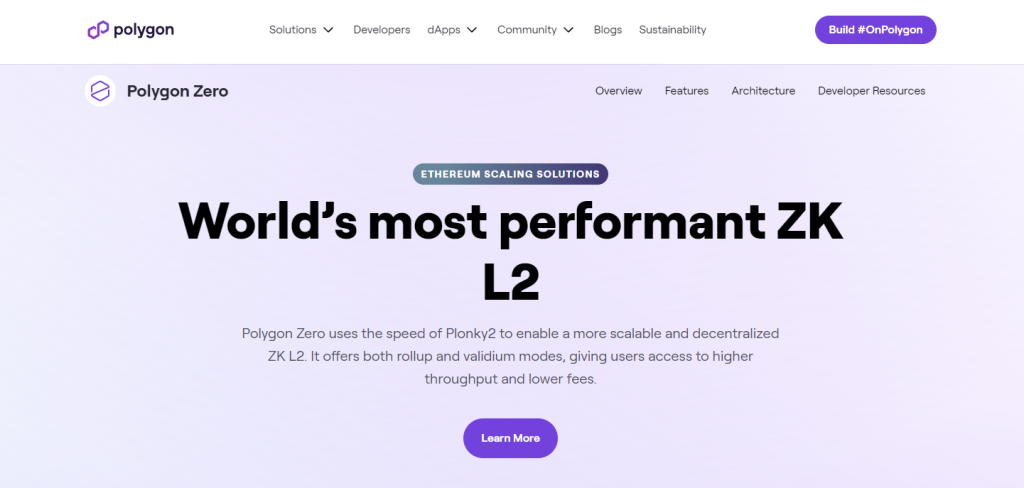
The team at Polygon Zero have made impressive progress in maximizing the potential of their ZK-rollup (ZKRU) project – Total Value Locked (USD): $2.6B. The first version was able to generate a proof in 2 minutes, and then with Plonky2 the team pushed it further and are currently able to generate recursive proofs in 0.17 seconds!
Moreover, because Polygon Zero requires significantly less computational power than other ZK-rollups, anyone can use it as regular Macbook Airs are able to complete a proof in just 0.3 seconds! This ensures scalability as well as improved latency – perfect for decentralized applications!
🥇 StarkNet: The Next-Generation ZK-Rollup Platform for Developers
StarkNET is the next-generation ZK-rollup platform that provides developers with a secure and affordable way to build their applications on Ethereum. It stands out due to its reliable zero-knowledge proof system, ZK-STARKs and has incredible transaction fees, up to 100 times less than Ethereum’s.
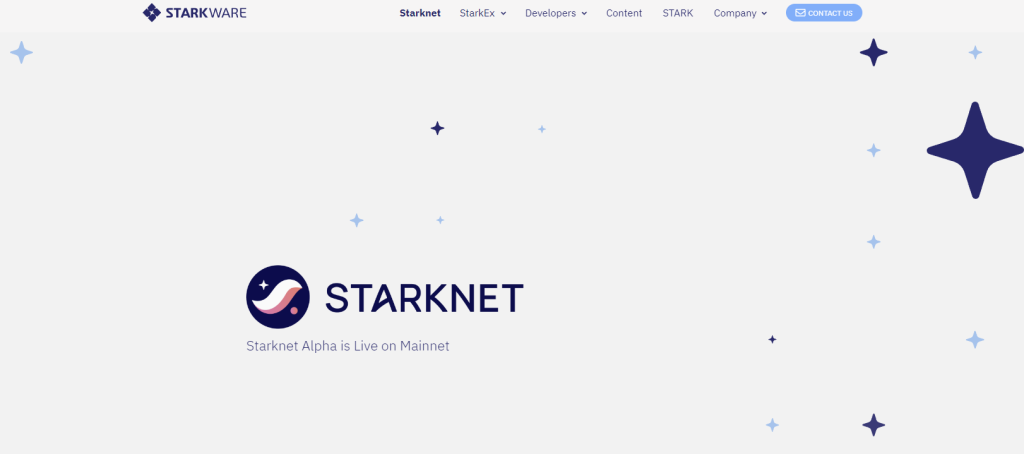
Aside from its security features, StarkNET offers better scalability for the users looking to build on top of it through its native token. The token itself is used for network governance, consensus mechanism, and settling transaction fees allowing developers richer functionalities when building their projects.
For those who are looking for an efficient alternative as a zero-knowledge rollup project or just an innovative blockchain protocol in general, StarkNET is definitely one of the most promising contenders alongside Polygon Zero and Loopring.
🥉 Immutable X: The Scalable Layer 2 Solution for Ethereum and NFTs
Immutable X is the ultimate answer to Ethereum and NFT scalability. It offers instant transaction confirmation and near-zero gas fees for minting and trading NFTs, something no other project has been able to do. ImmutableX was founded in 2018 by James Ferguson, Robbie Ferguson, and Alex Connolly, and is powered by StarkEx – enabling it to scale with ZK-rollup technology.
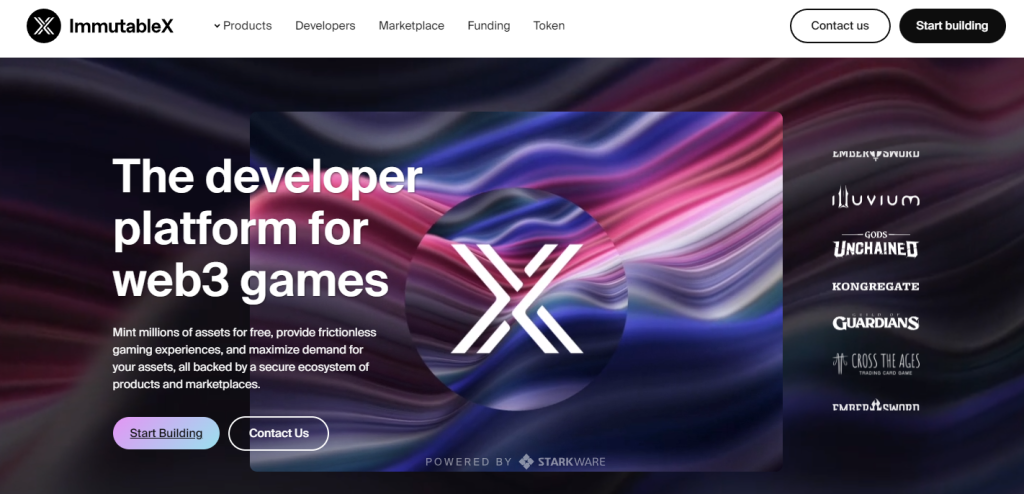
It also allows anyone to create and trade NFTs without compromising on security of assets. The shared global NFT order book could be an efficient way of increasing liquidity and trading volume in the ecosystem. As a bonus, minting NFTS costs a fraction of the energy cost – which is offset via carbon credits – thanks to compression of data during settlements.
Users can then buy or sell their assets on any marketplaces running on Immutable X – it supports up to 9000TPS speeds! With this layer 2 solution that brings high performance alongside security, more would adopt Ethereum & NFT technology without worrying about scalability issues in future.
🔒 zkSync: The Trustless and High-Speed Layer 2 Solution for Ethereum
zkSync is a leading Ethereum Layer-2 blockchain solution that promises to enable users to securely and privately scale their Ethereum transactions. Using zero-knowledge rollup technology, zkSync is able to achieve speeds of up to 100,000 transactions per second with its upcoming upgrade – zkSync 2.0! This version of the protocol will feature smart contract capabilities like Solidity plus its own native programming language, Zinc.
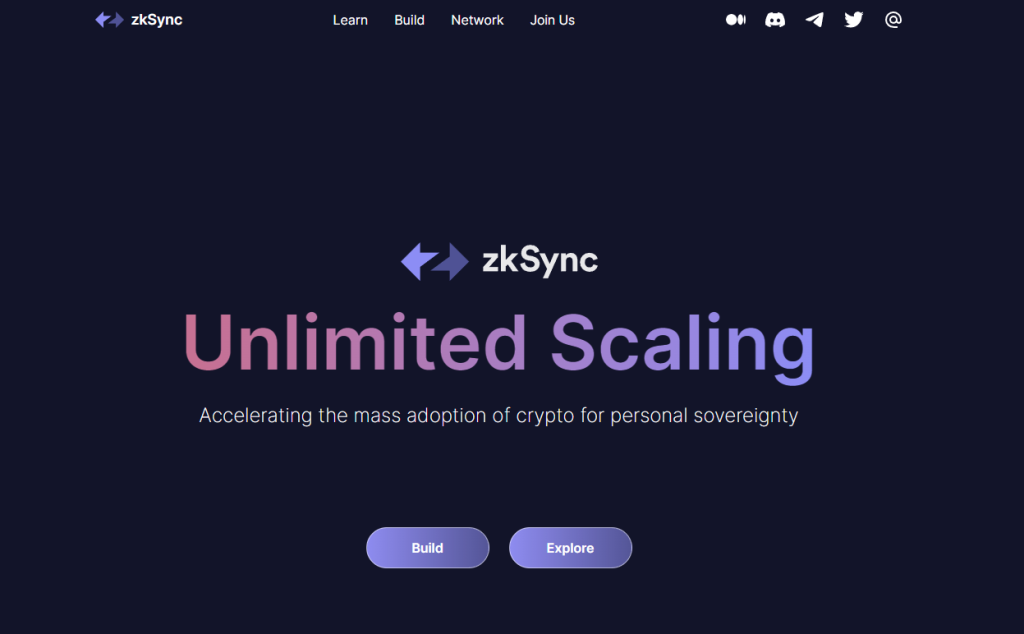
As if that wasn’t impressive enough in itself, developers have already built several dApps on top of the platform such as Curve, ZigZag, and Taker Protocol. With the extra layer of security and speed provided by a layer-2 solution like zkSync, users are now able to take advantage of all the benefits that blockchain technology has to offer without having to worry about trust or speed issues.
🔑 Aztec Network: The Private and Scalable ZK-Rollup Solution for DeFi
Aztec Network is the perfect marriage of privacy, scalability and DeFi. Utilizing zkSNARK proofs to provide a Layer 2 scalability solution, Aztec Network provides the infrastructure needed to develop robust Ethereum-based protocols.
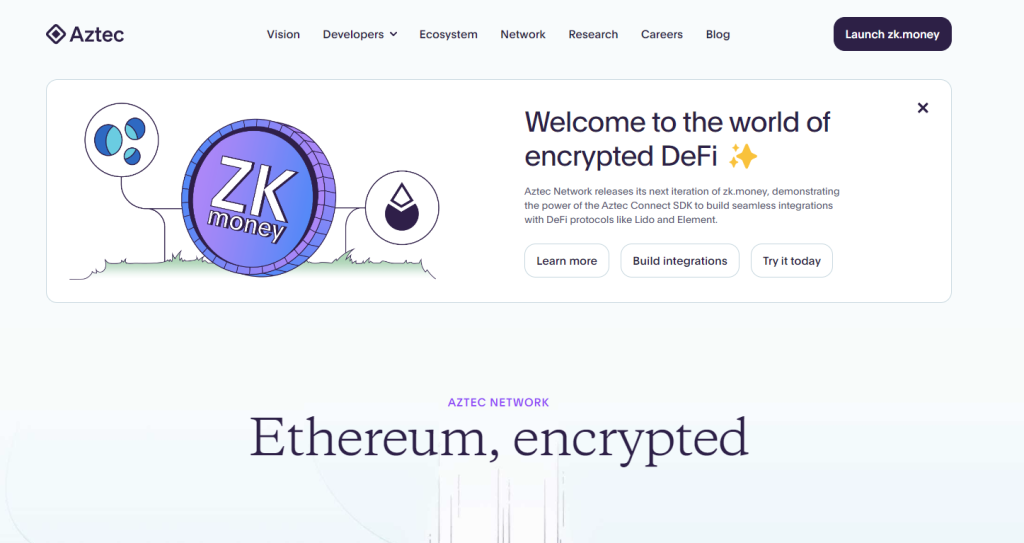
What makes Aztec special is its dual focus on privacy and scalability – it’s one of the very few projects that has managed to bring them together in a seemingly effortless manner. Thanks to its open source platform, developers have been able to leverage Aztec for their decentralized finance (DeFi) applications, using its sophisticated technology for their projects.
If you’re looking for an efficient solution for your DeFi project that’s both private and scalable, Aztec Network is the perfect choice! With its zk-Rollup approach, it solves two key challenges of speed and security with ease – making it ideal for building complex Ethereum-based applications faster.
🥇 Syscoin (SYS): The Secure and Scalable ZK-Rollup Solution for Commerce
Syscoin (SYS) is a secure and scalable ZK-Rollup solution for commerce, combining Layer 1 and Layer 2 elements with its PoW blockchain. This creates a platform for developers to create Web 3.0 DApps and fast and secure DeFi products.
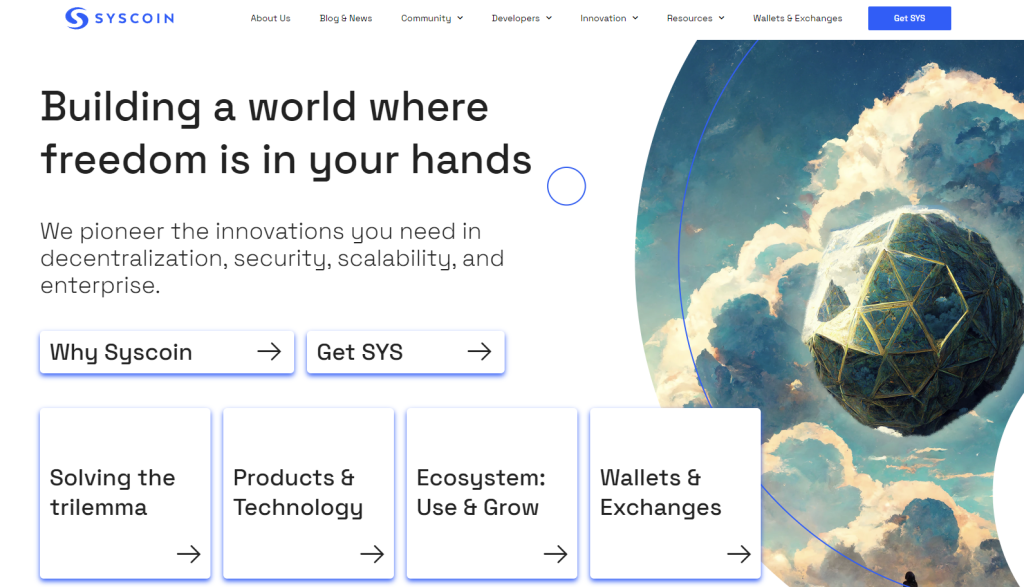
The Syscoin network offers various applications such as NFTs, metaverse apps, and an increasing number of projects launching on the platform. With the ZK-Rollups scaling solution offering 210,000 transactions per second with low fees, Syscoin is making waves in commercial and enterprise level development.
Users can use the native token SYS to pay network fees, use masternodes for rewards or governance voting, or to buy custom asset tokens called Syscoin Platform Tokens (SPT). Meanwhile you can also merge-mine both Bitcoin and SYS simultaneously – increasing user reward yield without extra effort.
With all this, there’s plenty of reason to be bullish about Syscoin in 2022 – trust us! The combination of security, scalability, low cost of transaction fees on offer makes it an appealing proposition for ambitious developers starting out in blockchain or big organizations looking for new solutions.
🥉 Loopring (LRC): The High-Performance ZK-Rollup Solution for DEXs
Loopring (LRC) is the high-performance ZK-Rollup solution for decentralised exchanges (DEX). It offers quick and low fee transactions with its open-source technology built on Ethereum blockchain.
The platform enables users to securely trade available assets on the blockchain and provides liquidity at speed, efficiency and reliability. Loopring allows full control of funds to its users, hence it has become a popular choice for many Ethereum holders.
At present, the project is still in beta, but development teams are working hard to bring more features and updates in the coming days. For those who want to get ahead of their peers, now is a great time to start learning how to buy Loopring!
🥇 StarkWare: The Scalable and Secure ZK-Rollup Solution for Enterprises
StarkWare is the ultimate solution for enterprises that require secure, scalable ZK-Rollup technology. Its Zero Knowledge (ZK) cryptographic proofs provide increased privacy, transparency (no trusted setup required), succinctness, and post-quantum security – making it one of the best ZK Rollup projects out there.
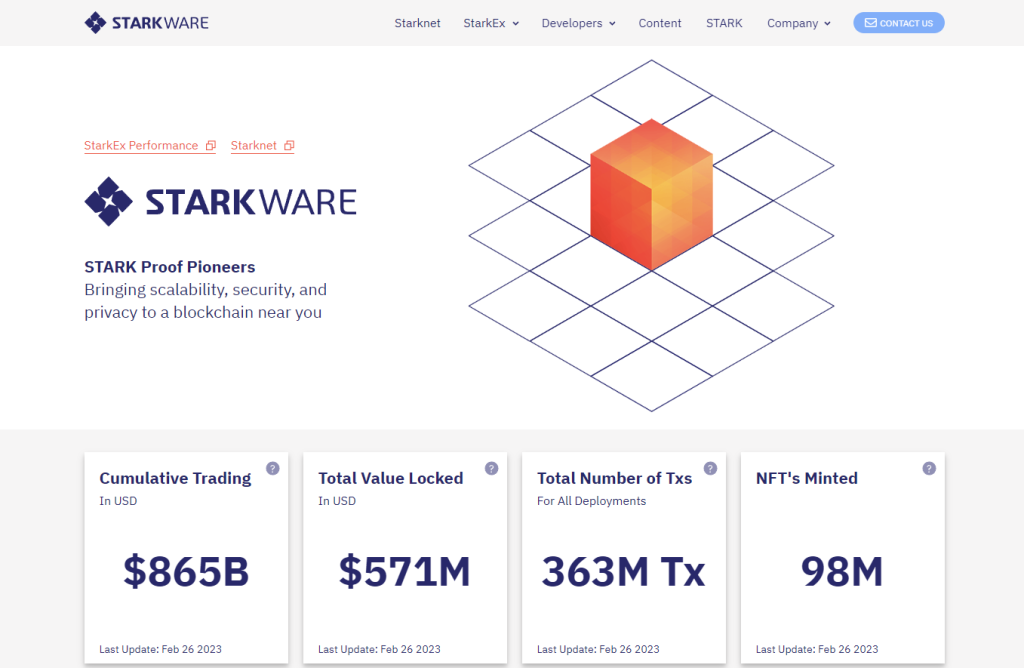
Specifically designed to vastly improve scalability and security in blockchains with STARK technology, StarkWare makes trustless execution of financial transactions more efficient and cost-effective. Additionally, StarkWare helps businesses make smart contracts more secure by providing an extra layer of zero-knowledge that can detect fraudulent behavior.
All in all, StarkWare is a great scalable and secure choice for any enterprise looking to employ zero-knowledge Rollup protocols. Not only does it provide transparency without sacrificing privacy or scalability, but also boasts several security features against fraud as well as post-quantum protection suited for highly sensitive operations.
🌟 What Makes ZK Rollup Projects Unique: Understanding the Core Concepts
Zero-knowledge rollups (ZK-rollups) are quickly becoming one of the most popular Layer 2 scaling solutions. But what makes them unique? To understand how it works and stands out among other Layer 2 technologies, it’s important to know the structure of ZK-Rollups, which is based on Ethereum as a base layer for settlement.
A typical ZK-rollup consists of two main components, both on-chain: the “main” contract, responsible for storing rollup blocks, monitoring blockchain state, and tracking fund deposits/withdrawals; and a verifier contract that authenticates and confirms zero-knowledge proofs before they can be submitted to the base layer. Additionally, an off-chain virtual machine serves as the second layer for processing batches of transactions efficiently – making high throughput and scalability possible.
Furthermore, a layer 2 operator and supernode handle transaction execution and batching – with some projects using only one operator while others use proof-of-stake validators who take on this duty in rotation. Finally, Ethereum provides security by enforcing correctness updates in each block while also verifying every transaction.
Overall, understanding these core concepts can help further appreciate the power of ZK Rollup projects – boosting scalability without sacrificing privacy or security.
⚖️ ZK-Rollups vs. Other Layer 2 Scaling Solutions: How They Compare
👉 ZK-Rollups vs. Other Layer 2 Scaling Solutions
Layer 2 scaling solutions like rollup protocols serve specific use cases within the blockchain ecosystem, but they all operate similarly.
👉 ZK-Rollups vs. Optimistic Rollups
When it comes to Layer 2 Scaling Solutions, ZK-Rollups and Optimistic Rollups both offer scalability improvements at the cost of some security guarantees. While they may operate in similar ways, there are also critical differences between them.
ZK-Rollups validate transactions with complex cryptographic validity proofs that are posted to the Ethereum mainnet – this leads to longer confirmation times, but higher security guarantees. On the other hand, Optimistic Rollups trust all transactions as valid, thereby speeding up transaction speeds while sacrificing some security. The tradeoff here is that during a challenge period anyone can question the validity of any transaction – if something seems fishy a fraud proof will be used in order to determine if fraudulent activity has taken place.
While ZK-Rollup’s confirmation times may be far longer due to its verification methods, Optimistic Rollup’s have challenge periods that can cause more delays than offered by regular ZK-Rollups. These challenges guarantee extra security since Sequencers who submit fraudulent data have their ETH stake slashed as punishment. Moreover, Optimistic Rollups provide Smart Contract capabilities impossible with ZK-Rollups – making them essential for dApp developers looking for absolute flexibility in Layer 2 scaling solutions.
👉 ZK-Rollups vs. Sidechains
ZK-Rollups and sidechains have some similarities but also distinct differences. ZK-Rollups utilize Ethereum mainnet security, making them more expensive than sidechains which don’t need to validate the data they are receiving from the mainchain.
In terms of storing transaction data, Rollups batch transactions on layer two of the blockchain and then submit them to the mainchain. Meanwhile, Sidechains are their own separate entity which create entirely different chains and only submit deposits and withdrawals to the mainchain.
There are some security risks involved with sidechains as they rely on a set of operators that control bridge contracts, while ZK-Rollups rely solely on Ethereum’s network security. In addition, any Sidechain could experience a 51% attack or its operators could limit withdrawals, making it less secure than an Ethereum-based ZK-Rollup.
👉 ZK-Rollups vs. Plasma Chains
The debate between ZK-Rollups and Plasma Chains can easily be summarized: both are Layer 2 scaling solutions for Ethereum. But there are some key differences between the two that make them better suited for different use cases.
Plasma chains rely on a sidechain that is regularly committed to the mainnet with Merkle roots. Meanwhile, ZK-Rollups group hundreds of transfers into one transaction which is then verified via a zero-knowledge proof on the main chain. While both reduce transaction costs when compared to using Ethereum alone, ZK-Rollups require fewer resources and, as such, are better suited for most use cases when considering user friendliness.
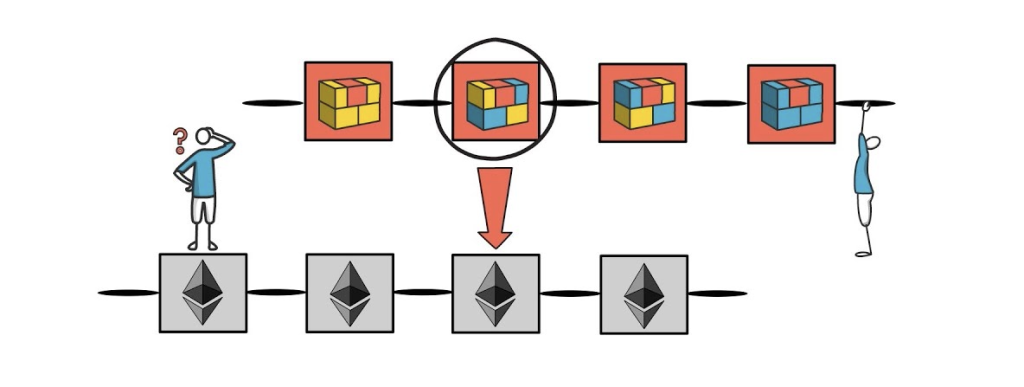
In terms of security, both plasma chains and rollups utilize fraud proofs to ensure their safety. However, in plasma chains it’s necessary to hold governance token holders votes if data unavailability errors occur in order to determine whether the ledger is correct and if the operator is trustworthy — this differs from rollups which assume a trusted state. Additionally, with either solution you can withdraw funds even if the exchange running it is down due to these fraud proofs on the public ledger.
Ultimately, plasma chains and ZK-Rollups both have advantages and disadvantages depending on your particular use case. It’s important to do your research before deciding which route is best for you!
👉 ZK-Rollups vs. State Channels
As blockchain technologies advance, there is growing interest in scaling solutions like ZK-Rollups and State Channels. These two technologies are quite different, with unique advantages and disadvantages.
In a State Channel, two or more parties can transact off the Ethereum blockchain in a secure manner, without recourse to the mainchain. They do this by exchanging state updates between each other. When any of these parties decide to stop using the channel, an “exit” must be initiated in order for their final balances to be transferred from the mainchain. To avoid long wait times for withdrawal to the mainchain, they can also sign a ‘finalization proof’ which allows them to exit without waiting for a challenge period.
ZK-Rollups differ in that they require a rollup operator who processes all transactions in order for them to be finalized on the Ethereum blockchain. Finality is also slower than with State Channels; while these channels offer immediate finality where transfers of values are instant, ZK-Rollups take some time before transactions settle and become final on the mainchain.
Overall, it’s clear that State Channels have certain advantages over ZK-Rollups like privacy and faster transaction speeds–but it’s not a one-size-fits all solution; each technology has its own pros and cons depending on your individual needs.
💪 Benefits and Limitations of ZK-Rollups: Weighing the Pros and Cons
When evaluating the potential of ZK-rollup projects, it’s important to weigh their benefits and limitations in equal measure. On one hand, ZK-Rollups provide trustless cryptographic setups that eliminate reliance on honest validators, allowing for greater security. Similarly, validity proofs authenticate users’ off-chain transactions and prevent operators from making changes to Ethereum’s state. Plus, ZK-rollups expedite transaction finality periods since they need fewer confirmations than optimistic rollups.
However, there are some drawbacks associated with ZK-rollups too. Despite their data compression techniques that reduce the cost of publishing data on-chain, they require significant capital investment to maintain their trustlessness and are therefore not ideal for smaller users. Additionally, since they do not depend on liveness assumptions like chains or sidechains do, it can be difficult to incentivize miners or validators as there is no major reward at stake as such.
Ultimately, you will have to decide what weight each benefit or limitation carries based on your own individual use case – but one thing is certain: if used correctly and efficiently enough,ZK-Rollups offer an upgraded layer of scalability compared to other Layer 1 mechanisms!
❌ Drawbacks
The potential benefits and limitations of ZK-Rollups need to be carefully weighed when deciding to use them in a project. ZK-Rollups make use of zero-knowledge proof systems, which can provide a great deal of security but may require trusted setups that can compromise the rollup’s safety if mishandled.
Additionally, centralized structures such as the single operator or supernode sequencer employed by some ZK-Rollups can directly influence transaction order and potentially cause censorship. Furthermore, since specialized hardware is needed to complete the computational work associated with the proof system, high entry barriers reduce the position of participants profiting from participating in the network and leave it open to attacks from malicious operators as well as censorship.
Finally, constructing zero-knowledge rollups compatible with Ethereum Virtual Machines (zkEVMs) is both costly and complex, making contracts a recent addition to the rollup framework.
Overall, decisions about employing ZK-Rollups must take into account both the potential benefits, such as increased security and convenience for users, as well as the limitations presented by their hardware requirements, cost and complexity.
The Bottom Line
The bottom line is that ZK-Rollups offer a great solution for Ethereum’s scalability challenges. With its innovative zero-knowledge-proof technology, ZK-Rollups can offer significant advantages in terms of transactions per second, gas fees, security, and privacy, as well as scalability.
Plus, the technology behind ZK-Rollups is still fairly new and there are likely to be more technological advances in this field in the near future. For those looking for an efficient and secure way to scale their projects on the Ethereum network, ZK-Rollups are definitely worth a look.




